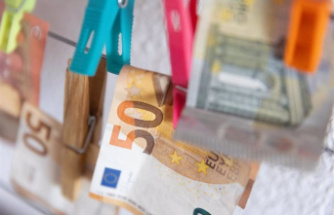They hope to put the european Commission at the foot of the wall" and force him to answer them. Seven associations of consumers, UFC-que choisir, has launched on Monday a petition "pro-nutri-score". The goal: that the european Union requires labeling simplified Nutri-score on all food packaging, "in order to ensure a nutritional information of high quality to european consumers and protect their health."
" READ ALSO - Foods: the hunt for labels false
Representation of the Nutri-score as it exists in France. Public domainThe Nutri-score, so it is this system of labelling present in France since 2017, since the promulgation of the act Health scope by the then minister, Marisol Touraine. Only, the Nutri-score is non-mandatory, "due to the current european regulation". Since last year, we find this labelling system invented by the epidemiologist in the nutrition, Serge Hercberg also in Belgium and Spain. It is characterized on the basis of five letters (A to E) and a color code, from green to red, depending on the nutritional quality of the food. In light, the more the food is too fatty, too sweet, too salty, the more the cursor will become red.
Optional, so not very usefulBut while many scientific studies and experts praise this system of labeling, held, in particular as the most clear of all the systems invented, its non-compulsory makes the measure more or less sterile. Indeed, since its promulgation in 2017, the Nutri-score does not attract crowd to industrial. According to a study by 2018 from the Observatory of the quality and the power supply (Oqali), the 28 sectors of food defined by the Observatory, only seven show a proportion of references to the Nutri-score that exceeds 10%. Concretely, 20% of compotes use the Nutri-score, 12% of convenience foods, 17% of purees and products made from potatoes. These products are for the most brand retailers such as Intermarché, Leclerc or Auchan. "These are mainly foods with Nutri-score is close to the best rating, because of the strong presence of vegetables", wishes to emphasize Olivier Andrault, chargé de mission food and nutrition within the UFC-That choose. With the exception of the charcuterie Fleury Michon, which has directly adopted the Nutri-score.
in contrast, the families of foods whose nutritional quality is generally less strong use little Nutri-score: it is only 4% among the dairy products and yoghurt, 4% in cereal breakfast, 3% in biscuits/cakes, and 1.9% in the soft drinks, the latter being known to be particularly too sweet. Among the brands being opposed to the Nutri-score, we can mention Coca-Cola, Mars, Mondelez, Nestlé or Unilever.
Cacophony of the europeanIn the field of packaging of goods, that is the European Union which regulates since 2006, through the Authority european food safety (EFSA) based in Parma, Italy. Until then, the laws were national, but in view of the development of the european market, it was necessary to harmonise the rules. The new legislation applied in 2011 figure the regulation for applying maximum: everyone must respect it.
Models of Traffic light british adopted as early as 2005. Laure SéguyAfter six years of research and a thesis in sociology on the topic, Laure Séguy has well understood the difficulties related to the subject of the labelling of food packaging. "Historically, concerns about nutrition were developed in the early 2000s, but that was many years before that everyone would agree", she explains. According to her, "the British were the forerunners with their strict regulations on food packaging in place from the 90's". The former researcher cites in particular the system of "Traffic light", or traffic Lights: the boxes depicting the rates of sugar, salt or fat in the food in question, and colorized in green, orange or red depending on whether the rate is good or not for health. The ancestor of the Nutri-score, sum.
an Example of labeling format GDA. Laure SéguyThis system was originally the one who was to be generalized within the EU. "With the exception of Italy and France, large food producers, are mounted to the niche, to defend the gastronomy and denounce the discrimination of the products", explains Laure Séguy. The result, after years of debate, in October 2011, the Traffic light is abandoned for the GDA, which in French is called the reference nutrient daily, the system that we know today. "There is no color code, it is much more unclear, it remains only figures difficult to understand," said the doctor.
"READ ALSO - Act power supply: between controversies, disappointments and hopes, the text adopted by meps divides
" SEE ALSO - Act power supply: consumer-distributor, who is the winner?
Law of supply : consumer-distributor, who is the winner ? - Look on Figaro Live
Olivier Andrault, remembers: "already at that time, in 2011, the consumer organisations had promoted a labeling understanding for all. The complexity of the tables used on the packaging results in that 82% of consumers do not understand, leading in fine to a too much consumption of foods bad for health, leading to an increase of obesity, cardio-vascular diseases and diabetes. The Commission, at the time, we had not heard and had preferred to play the trade-offs between the different actors, States, industry and consumers."
Why this time the Commission would return to its legislation? "Things have changed, don't get Olivier Andrault, we can now rely on numerous scientific studies that defend the Nutri-score. And the concerns of power are increasingly important, consumers are increasingly attentive to what they eat. It is necessary to oblige the Commission to take a fresh look at the subject".
Of progress, it may be noted: last February, the Assembly voted for the generalization of the nutri-Score on all advertising media. With one caveat, however: advertisers may pay to deviate from them. There is still a way to go before really knowing what you are eating.
Date Of Update: 21 May 2019, 23:00












